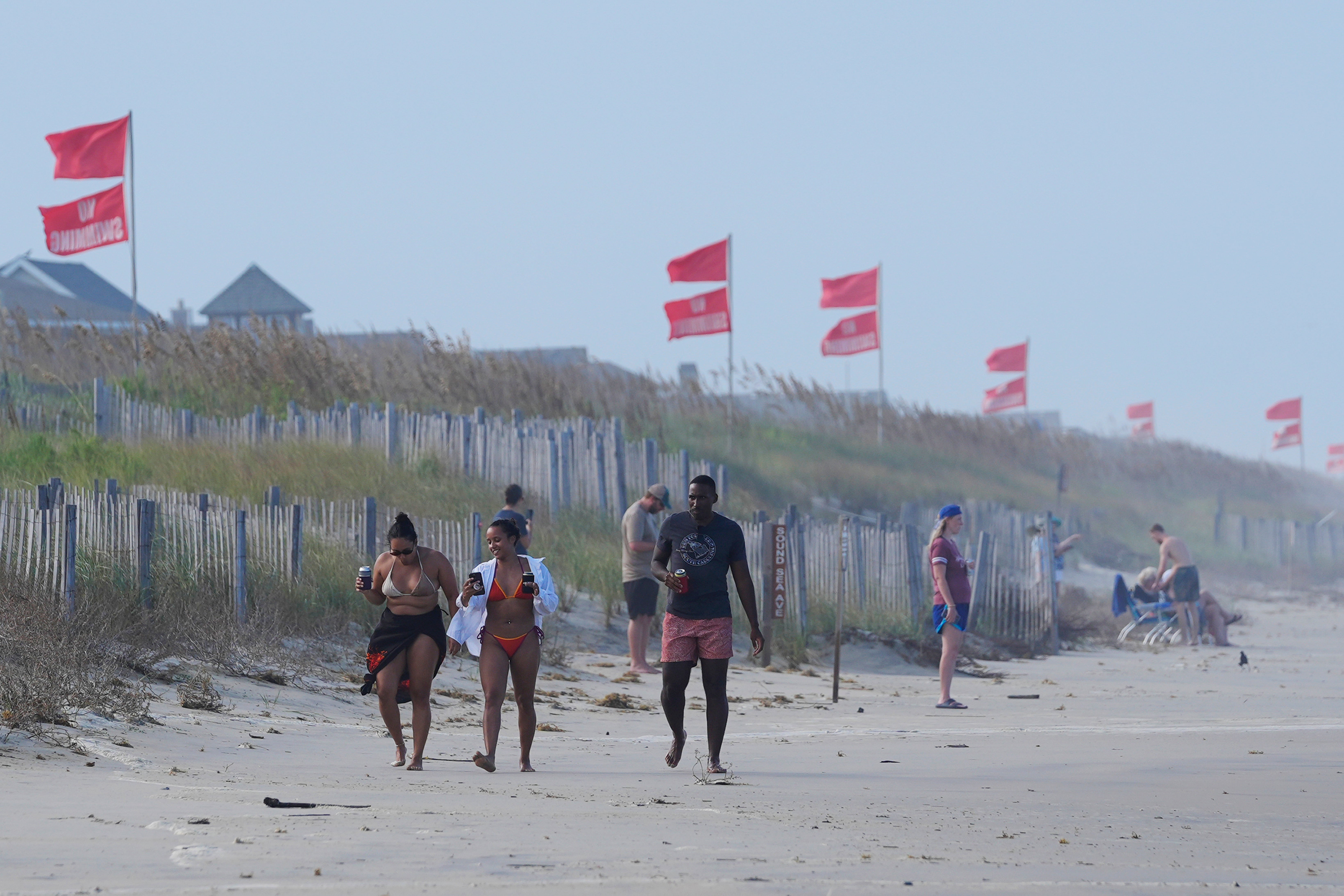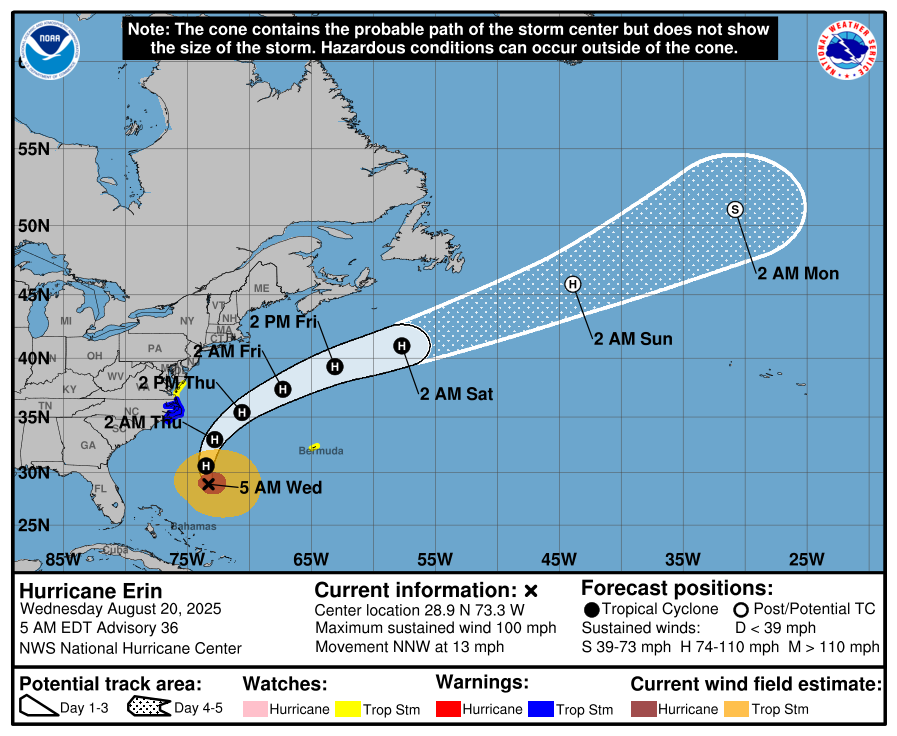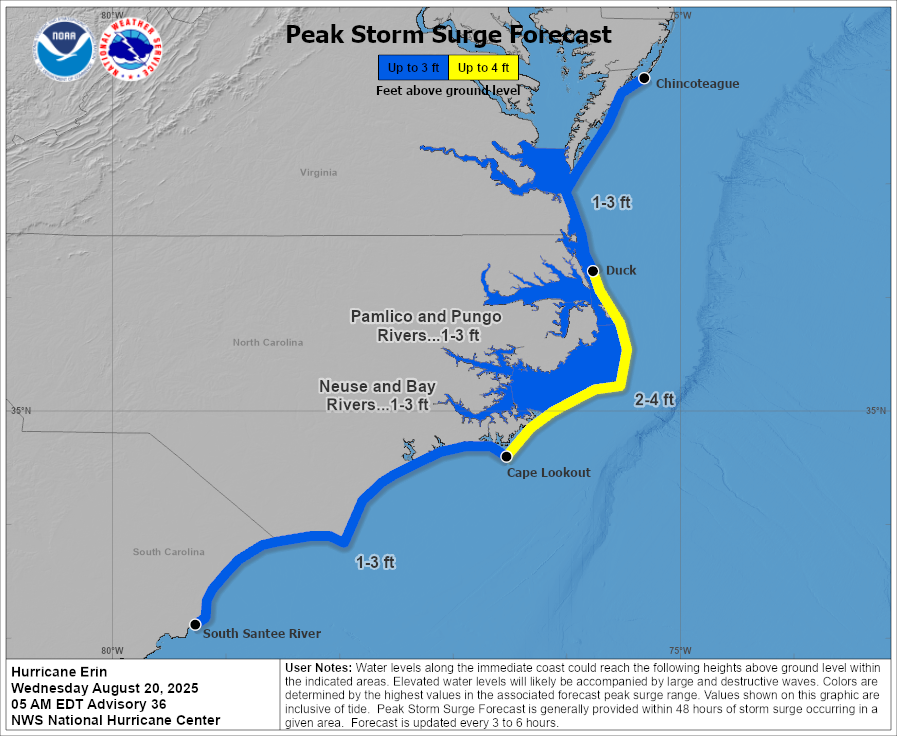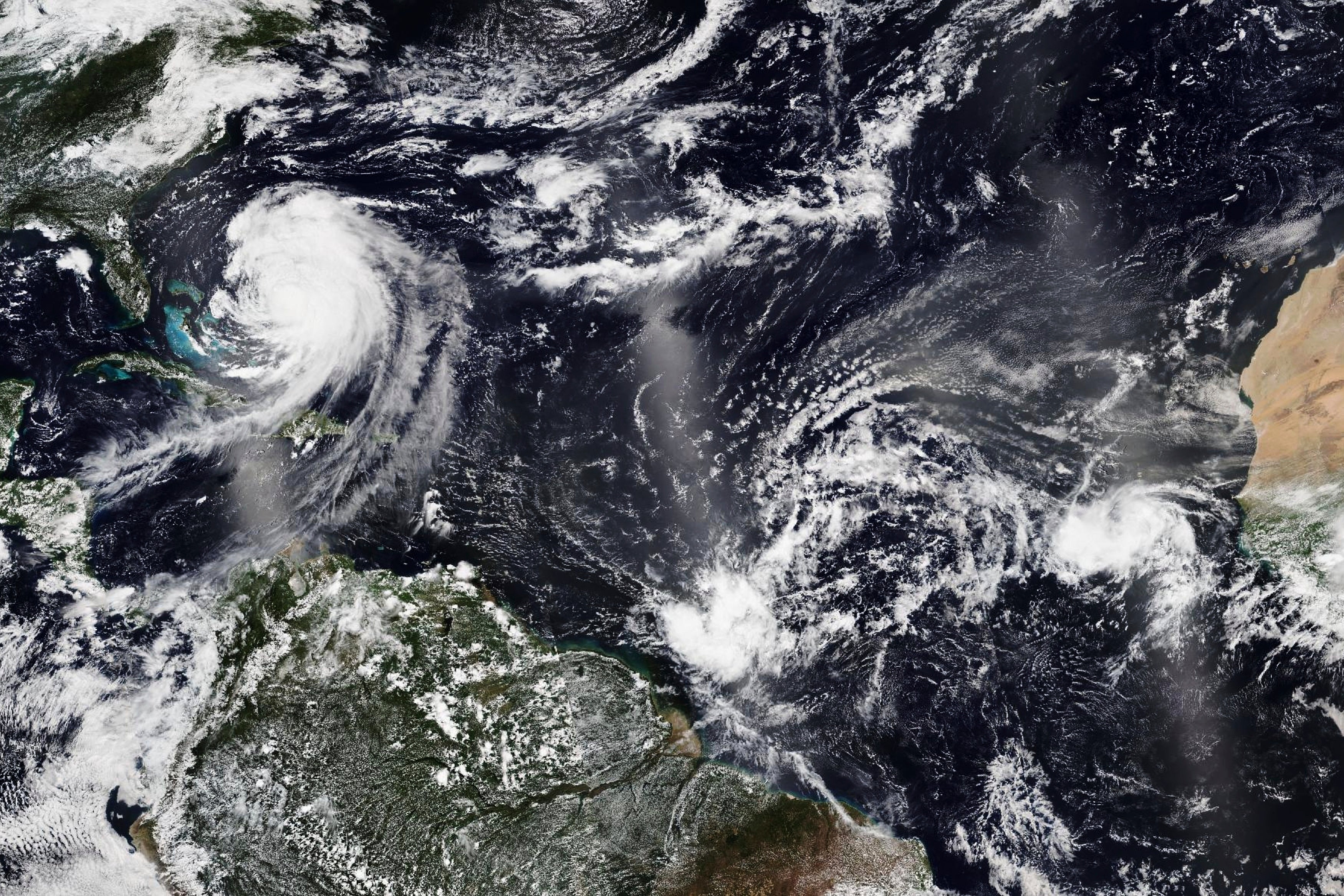Hurricane Erin made a sudden shift in trajectory Wednesday as Category 2 winds raced towards the U.S. East Coast, resulting in closed beaches and a state of emergency being declared in North Carolina.
Days after 130mph winds and torrential rainfall battered the Caribbean and left tens of thousands of Puerto Ricans without power, fears grew that Erin would slam into the U.S. as a Category 2 hurricane this week. By midday the storm was approaching Category 3 classification.
In an advisory Wednesday morning, the National Hurricane Center in Miami confirmed the storm was unlikely to make U.S. landfall after veering northwest toward open waters.
However, coastal states including Florida, New York, North Carolina and Virginia braced for impact, with swimming prohibited in “most” beaches.

Storm surge flooding and tropical storm conditions were present Outer Banks area of North Carolina, forcing state Governor Josh Stein to declare a state of emergency. “Right now, I want to emphasize the importance of taking this storm seriously, because it’s a serious storm and conditions can deteriorate quickly,” Stein told a morning press conference.
Lifeguards in North Carolina made more than 75 rescues from rip currents along the Wrightsville area coastline on Monday, prompting a no-swim order through Friday, according to the Wilmington Star-News.
Mandatory evacuations were ordered for Hatteras Island and Ocracoke Island in the Outer Banks ahead of the expected flooding, Stein said, adding that along with large swells, 4ft waves were expected to spill over sea walls, making some roads “impassable.”
“Turn around, don’t drown,” the governor said.

The storm surge will be accompanied by large waves, some up to 20ft high, and the possibility of flooding, according to the NOAA National Hurricane Center.
NOAA added that tropical storm conditions are expected on Thursday along the Virginia coast, with tropical storm force gusts likely along portions of the remainder of the U.S. Mid-Atlantic and southern New England coasts Thursday through early Friday.
While the East Coast has so far been spared the cyclone’s full force, the NHC issued a blizzard of warnings, including “life-threatening surf and rip currents” for the U.S., Bahamas, Bermuda, and Atlantic Canada throughout this week.

New York City closed its beaches to swimming on Wednesday and Thursday, and Governor Kathy Hochul ordered three state beaches on Long Island to prohibit swimming through Thursday.
Off Massachusetts, Nantucket Island could see waves of more than 10 feet later this week.
The worst conditions were expected late Wednesday through Thursday as the eye of the storm is likely to be at the closest point to the coast, carving a path between the East Coast and Bermuda.
Erin is expected to grow with tropical-storm-force winds extending 265 miles from its center before it is expected to begin weakening by Friday, the agency said.

Satellite imagery and reports from a U.S. Air Force Hurricane Hunter aircraft indicated that Erin “is getting better organized, and slow strengthening is expected through Thursday night.”
Erin, the first Atlantic hurricane of 2025, exploded to a ferocious Category 5 on Saturday before being downgraded to a Category 3 early Sunday morning, then regaining strength again later in the day.
The storm brought flooding, rainfall, high surf, and strong winds across Puerto Rico, the Virgin Islands, and the northern Leeward Islands.
By Tuesday, it lashed the Turks and Caicos Islands, where government services were suspended and residents were ordered to stay home, along with parts of the Bahamas.



